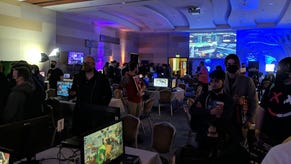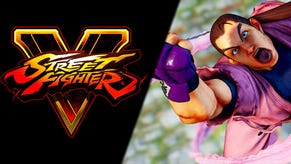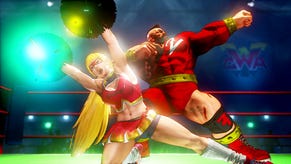Street Fighter V Stress Test: Notes from the Underground
This past weekend, the Street Fighter V beta lurched back to life. Here's what we found.
This article first appeared on USgamer, a partner publication of VG247. Some content, such as this article, has been migrated to VG247 for posterity after USgamer's closure - but it has not been edited or further vetted by the VG247 team.
Last week, astute PlayStation 4 owners found that their Street Fighter V beta client had updated to ver. 1.02. Swell, you might be thinking, there’s going to be another round of beta testing soon to make up for last month’s disaster. Well, my curious fighting game amigo, it already happened, and if you weren’t sitting around on Friday night with nothing else going on, well, tough cookies. You missed it.
Ok, so maybe that’s a half truth. It turns out that Capcom ran an un-advertised internal stress test last Friday evening (which they confirmed via their Twitter account after the fact), and people got into it essentially by word of mouth. We didn’t even know about it; one resourceful USG reader sent me a PSN message at around 10:00pm and let me know that they had already played about 45 minutes of stable matches, making me drop everything I was doing to dig out my swank new arcade stick. So, a little on the underground side, then. Let it heretofore be known that the Street Fighter franchise is at least a little bit punk rock. Even though I was a bit late to the party, this still meant that I got a few good hours of hands-on time with it. Here’s how it went:
The biggest takeaway, which is evident even after one solid round, is that this is very much an aggressive game. While it’s not as in-your-face as high level King of Fighters or any of Arc System’s releases, the threat of easy, high damage combos always looms over each match. Critical Arts (super moves) come out very fast –maybe just a frame or two off of normal moves combo-ed—making an opponent with a full meter much more threatening than without one. While normal moves didn’t seem particularly more damaging than in Street Fighter IV, short combos of linked normal moves that finish with even an EX special could bleed out a third of life or more (think two linked crouching medium punches into an EX fireball or hurricane kick), and more than double that if the aggressor was all-in with their meter for a Critical Art. As you can probably surmise, even though it’s still brand new and everyone basically stinks at it, these fights were pretty short.

To compound that, the stun meter buildup in this game is downright merciless, and I mean that in the best possible way. Hitting an opponent with a jump-in and then a light move to tick throw can net you almost half of a filled stun gauge. Probably 50% of the matches I played ended with someone in a dizzied state, making a whole lot of fights a race to who-stuns-who first, even though most of them wound up being elaborate slap fights in this early stage. Better yet, even if they’re blocking, the built up stun will remain until the player breaks away and isn’t being hit with moves. This means that if you land a few hits and drop them with a well-placed throw, the 75% or so of stun will remain even if they defend on wake up from the rest of your rush down. The flip side to this is that once the meter starts to drop when the almost-stunned player finally breaks away, it drops fast. Even if they’re on the brink of dizzy, if the opponent zigs when you think they zagged and lands a throw on you, the whole meter may reset to zero in that time. The game is built with this kind of momentum in mind, and rewards you for playing with that sort of aggression
.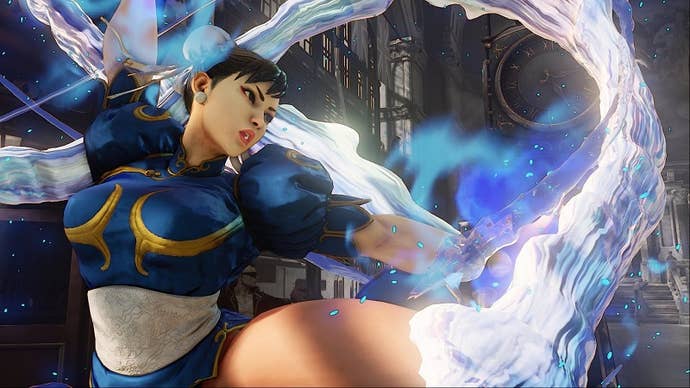
The way the various meters in the game are used really brings that home, too. The V-Gauge will reset from round to round, and it was always in my best interest to activate it as soon as it had accumulated. While there were a handful of players that would use it for V-Reversal counters, most players seemed to agree with how I was handling it, too. On the plus side, the V-Gauge built very quickly; one stock would be added after taking a few hits and maybe a throw, and since I used Ryu for most of my matches, parrying full screen fireballs (shame on you, full screen fireball throwers) did the job for me without much trouble. Once a character goes into that V-Trigger, though, they are a terror in the right hands. Very few people I played used Chun-Li, for example, and I found her a little on the difficult side in the training modes. But the ones that really knew what was up, though, found that they could use her V-Trigger state as a poor man’s Ginei Jin, essentially giving her normal moves not only the already reported extra hits, but also added juggle states. Even if you barely know what I mean by that, you might have just shivered at that last sentence. Couple all of this with her V-Trigger hop to dance over fireballs and shorten distance and Chun might wind up with her picture in the back of the yearbook with “most improved” under her name.
Compared to other games, this is maybe the first entry in the franchise where EX moves are across the board an all-or-nothing proposition, which makes the psychology of a lot of fights a lot different than one would expect. Even though EX buildup would last from round to round, a player no longer has both stocks of EX meter to beef up their special moves and some sort of super move as a desperation/ combo ender at the same time. In practice, this means that if you’re using EX moves to end combos or get out of sticky situations, you are absolutely sacrificing the use of a Critical Art until you can build the meter back up; no more Ultra meter to hang on to when you need it or a stored away stock of a Super Art. Image every character is Denjin Ryu from Third Strike and you’ll get what I mean; do I end a few combos with an EX move for more damage now, or do I save all of it for a big payoff later? Since this is such a high damage game, both are viable, but the tradeoff is always in the back of your mind mid-match.
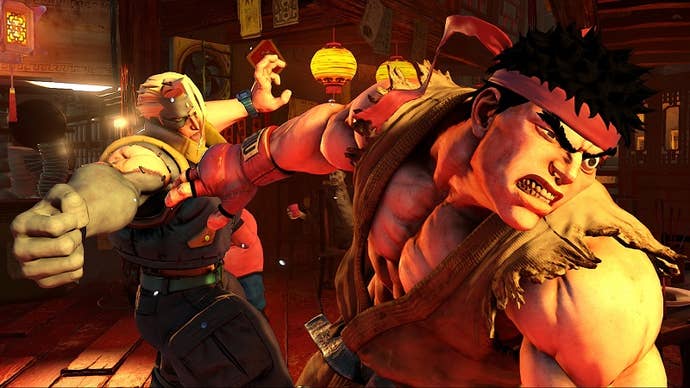
Most players were experimenting with returning favorite Nash, whom played more like a more pokey Adon from mid-screen until they could get in close. Of course, a lot of Ryus were floating around in the player pool because he is perhaps the least changed from game to game, so longtime players had an easy jumping off point. One of the great things about this stress test compared to the first beta (if you could get into it) was that you could pause the game and go back to a character select in between matches, so it was easy to experiment with the whole roster, limited as it is for the moment. Birdie and Cammy, sadly, were absent from the stress test, but for one night’s worth of playing, Ryu, Nash, Chun Li, and Bison were plenty to keep us busy.
For the most part, fights were stable, even when playing opponents from different regions. While people on the various fighting game forums seemed to disagree with that, I found the vast majority of games to be more than playable with only a few instances of aggravating rollback or skipped frames. We can probably attribute that to the lack of players compared to how it would have been with a more built-up beta round, but you can’t look this gift horse in the mouth that way.
Still, some technical foibles were floating around. It took forever after a match would end to get you back into even the training mode, especially, for some reason, if you were the loser. We did get a chance to see how character and player XP would generate after a completed fight, and even got a glimpse into how much Fight Money –Capcom’s in-game currency for who knows what at this point—would be earned upon a successful win. The bad thing is that it only accumulated for me about a third of the time. Win or lose, I was almost never gaining anything for my playing because something wasn’t syncing with the server, and the game would struggle to reconnect me to the next match.
At first, to be perfectly honest, I was a little let down that the rhythm of the game felt a little too akin to Street Fighter IV. By the time I finished my evening with it, though, I was totally on board, and I can’t wait to get my mitts on it again for the next round of beta (and hopefully with that snappy looking new Ken). Capcom is promising that this is going to happen soon, but we’re just going to have to wait and see when it finally goes down. From what this weekend showed us, though, they’re off to a much better start than we all thought a month ago.

